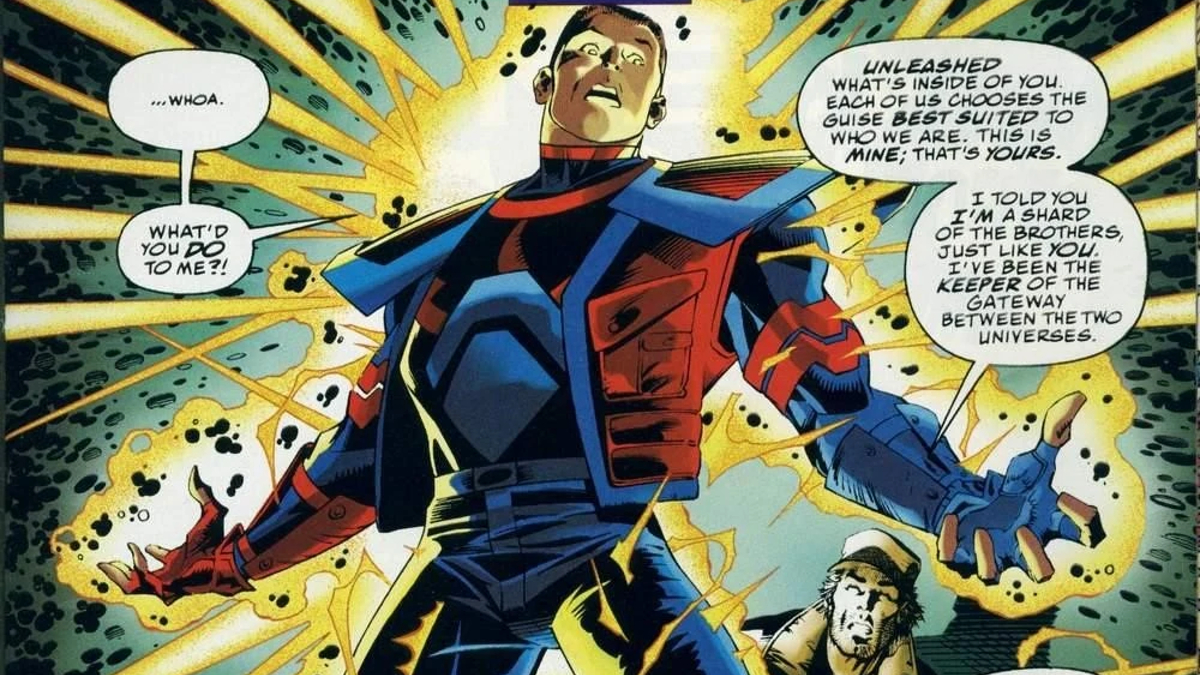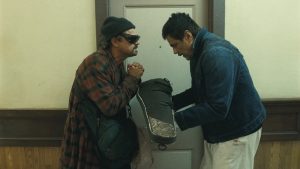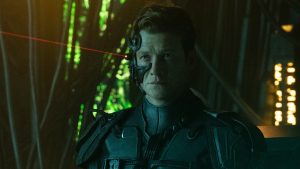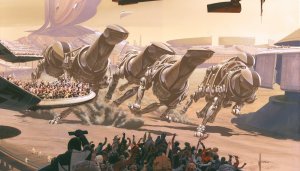
DC and Marvel have given the world some of the greatest characters in pop culture: Spider-Man, Batman, Superman, and D-Man (yes, some of us like D-Man). So if the two companies were to put their heads together and come up with a character that they could share, that character would be the greatest comic creation of all time, right?
Well, if that’s what you think, then let me introduce you to Axel Asher, aka Access. And let me tell you right from the beginning, that he is not the greatest comic creation of all time.
A History of Crossovers
Before going too far into the history of the greatest comic find of his generation, we have to put the distinction between the big two into their proper context. Long before Snyder bros blasted the MCU for making unserious movies about people in colorful tights, long before Marvel Zombies knocked DC for dealing in boring gods, kids bought comics with their favorite superheroes and the creators took any work they could get. In fact, so little did people care about the borders between universes back in those days that Marvel and DC even crossed over with each other at several points, with each company’s biggest characters stepping into each other’s worlds without much explanation as to how it was possible. It just was.
In the first DC/Marvel crossover (not counting a co-production of Frank L. Baum’s The Wizard of Oz), 1976’s Superman vs the Amazing Spider-Man (written by Gerry Conway, penciled by Ross Andru, inked by Dick Giordano, colored by Jerry Serpe, and lettered by Gaspar Saladino), Peter Parker and Clark Kent just happened to attend the same reporters’ conference. In 1992’s Batman/Punisher: Lake of Fire (written by Dennis O’Neil, penciled by Barry Kitson, inked by James Pascoe, colored by Matt Hollingsworth, and lettered by Ken Bruzenak), Frank Castle drives into Gotham looking for Jigsaw when he runs afoul of Batman (well, the Jean-Paul Valley Batman, anyway). No universal distinctions needed.
The easiest explanation for these crossovers is that they take place in an alternate reality in which the universes are already combined. For example, 1995’s Galactus vs Darkseid: The Hunger (by John Byrne and Rick Taylor) takes place in a universe where Galactus has devoured most planets, leaving only New Genesis and Apokolips.
But as crossovers between DC and Marvel grew more common in the ’90s and 2000s, the alternate universe explanation no longer worked. Fans wanted to see the real heroes interact, which meant that writers needed to address the universal distinctions.
In the best of these crossovers, 2003’s JLA/Avengers and Avengers/JLA (written by Kurt Busiek, illustrated by George Pérez, and colored by Tom Smith), the DC villain Krona encounters Marvel’s Grandmaster while traveling across universes. The Grandmaster offers Krona a wager, which drives the JLA and the Avengers to visit each other’s universes, and leads them to combine and mutate.
But for the much lesser event DC Versus Marvel and Marvel Versus DC from 1996 (by various creators), the two universes are represented by twin figures called “The Brothers,” who kinda look like Robotech creations and cause heroes from DC and Marvel to zap back and forth. And, of course, fight.
For the Versus miniseries, the companies let the fans choose the outcome of the matches. Comic book shops carried ballots that fans would fill out and send in, deciding the winner of Wolverine’s throwdown with Lobo or Wonder Woman’s bout with Storm. Because these were fan polls, story logic didn’t matter. Wolverine trounced Lobo (mostly behind a bar, so we couldn’t see) and Spider-Man beat Superboy, after freaking out about the revelation that Kon-El is a clone… a touchy subject for Spidey in the ’90s.
Amid the clashes of heroes of two worlds, the Versus miniseries also featured the coming of a new hero, a man called Access.
Amalgamated Adventures
Originally, DC and Marvel planned to swap characters for a bit after Versus. She-Hulk was going to get stranded in the DC Universe while Martian Manhunter would go to Marvel. Various legal hurdles prevented that from happening, but the two houses did manage to agree on a character that they would share Access.
Introduced in DC versus Marvel #1, Axel Asher has a tragic backstory in the form of the anger he feels toward his sister. When he was a child, his kid sister accidentally shot him in the leg, leaving him with a limp. Somehow, that resentment allows Axel to see the Brothers and draws him to the multiversal energy.
Given the fact that the companies created two towering robots to represent their universes, you’d think they’d come up with something cool for the multiversal portal that attracts Axel, right? No such luck. Axel gets bathed in the energy and becomes Access by touching a glowing cardboard box found in a back alley.
That disappointing origin kind of sums up Access. He’s a whiney character who spends his time either getting confused when he jumps between worlds or convincing the heroes to stop fighting one another, essentially nagging them until they stop doing the fun thing that fans want to see.
The follow-up stories DC/Marvel: All Access and Unlimited Access from 1996 and 1997 treated Access a bit better, because he served as a guide who transported the characters between worlds, but that only furthered the suspicion that he’s a nothing character. Why would you want to spend time with the usher instead of paying attention to the main event on stage?
So dull, in fact, was Access that he immediately was overshadowed by DC and Marvel’s better shared characters, the Amalgam Comics heroes. Amalgam Comics was the result of the Versus crossover, which led to a shared universe featuring mash-ups of characters from the worlds. Batman and Wolverine combined to make Dark Claw. Superman and Captain America made Super-Soldier. Iron Man and Green Lantern combined to make, well, Iron Lantern.
Although the quality of the Amalgam one-shots varied, there’s no denying the sandbox fun of the characters, which felt like the creations of little kids with a bunch of toys. Access should have been a key figure in the Amalgam Universe, but instead, he felt like an interruption, a dull nothing that did nothing to draw attention from weirdos like Speed Demon (Ghost Rider + the Flash + Etrigan).
Un-Access-Able
As superhero fandom has grown, both Marvel and DC have embraced their Z-list characters. After all, Peacemaker has his own TV show and Binary appeared in a recent post-credit sequence. But neither company has bothered to revisit Access.
Since the end of the original miniseries, Access was only briefly mentioned in Superman crossovers with the Silver Surfer (1997) and the Fantastic Four (1999). Even when the two companies met one last time in JLA/Avengers, which featured every single character who had ever been a member of either team, Access remained absent. Gilgamesh? Present. Rage? Present. Access? No way.
That said, it’s hard to believe that somebody, somewhere, wouldn’t stick Access on the Great Lakes Avengers or in the background of the Fire and Ice book. With the two companies finally reprinting the Amalgam Comics for the first time in decades, is it Access’ time to shine? Keep your eyes peeled for glowing cardboard boxes.
The post The Terrible Superhero That Is Somehow Owned by Both DC and Marvel appeared first on Den of Geek.





